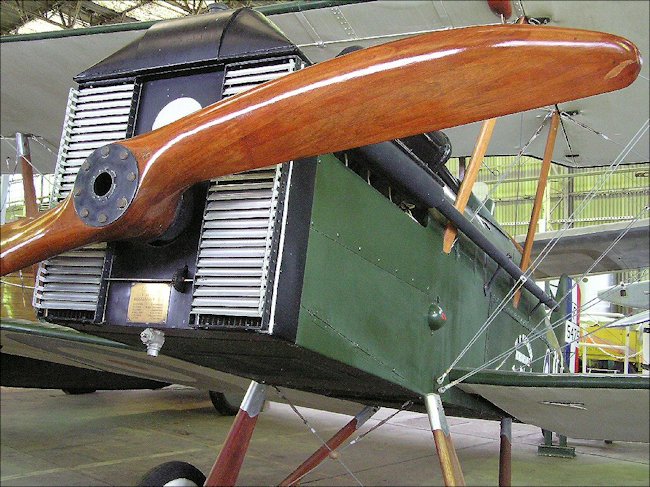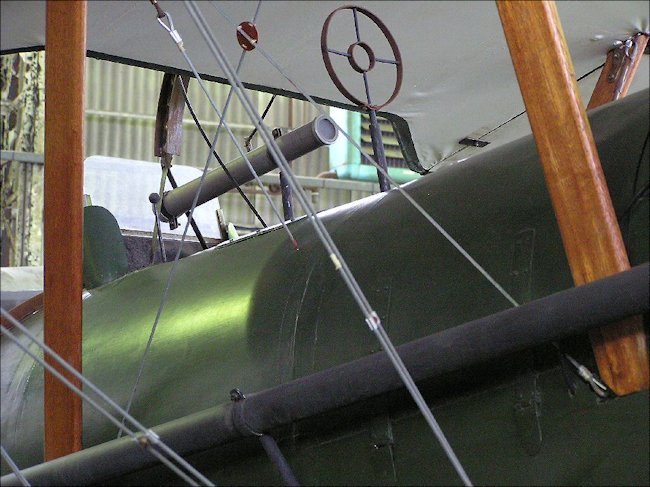Royal Aircraft Factory SE5A Fighter Biplane
This World War One SE5A fighter was developed by the Royal Aircraft Factory at Farnborogh and entered service in 1918. By the end of the war on the 11th November 1918 the SE5a was in service with 20 British Royal Flying Corps squadrons on the Western Front. Between 1917 and 1919 5,205 were built. Vickers Aviation built 1,650 at Brooklands, Weybridge, Surrey. This SE5A has come home and is now on display at the Brooklands Museum. SE stands for "Scout Experimental". It was was designed by Henry P. Folland, J. Kenworthy and Major Frank W. Goodden
The Royal Aircraft Factory S.E.5 reached the Western Front before the Sopwith Camel. It had a much better overall performance than the Sopwith Camel but there were problems with its Hispano-Suiza engine which was under-developed and unreliable. This meant that there was a chronic shortage of S.E.5s until well into 1918. More RFC squadrons were equipped with the Sopwith Camel rather than the Royal Aircraft Factory SE5 fighter biplane . The first of three prototypes flew on 22 November 1916.

Photograph taken at the Brooklands Museum, Weybridge, Surrey, England
The first two prototypes were lost in crashes (the first killing one of its designers, Major F. W. Goodden on 28 January 1917) due to a weakness in their wing design. The third prototype underwent modification before production commenced; the S.E.5 was known in service as an exceptionally strong aircraft which could be dived at very high speed so these changes were certainly effective.
The S.E.5 was stable, making it an excellent gunnery platform but it was also quite maneuverable. With a top speed of at 138 mph (222 km/h)it was one of the fastest aircraft of World War Two. The SE5 was less agile than the Sopwith Camel but it was easier and safer to fly, particularly for novice pilots. The SE5 only had one synchronised .303 inch Vickers machine gun to the Sopwith Camel's two, but it also had a top wing-mounted Lewis gun on a Foster mounting, which enabled the pilot to fire at an enemy aircraft from below as well as forward which gave it a tactical advantage if it the pilot could get close enough. The SE5 cockpit was set in the middle of the fusalage, making it difficult to see over the long front engine compartment, but otherwise visibility was good.

Photograph taken at the Brooklands Museum, Weybridge, Surrey, England
Only 77 original S.E.5 aircraft were built before an improved plane the S.E.5a was produced. The main difference was the installation of a better engine, the geared 200 hp Hispano-Suiza 8b. Some were fitted with a 200 hp (149 kW) Wolseley Viper piston engine. In total it is believed that 5,265 SE5As were built by six manufacturers: Austin Motors made 1,650, Air Navigation and Engineering Company built 560, Curtiss only built 1, Martinsyde constructed 258, the Royal Aircraft Factory made 200, Vickers produced 2,164 and Wolseley Motor Company completed 431 SE5A biplanes.

Photograph taken at the Brooklands Museum, Weybridge, Surrey, England
When the Fokker D.VII fighter arrived at the Western front many allied fighters could not match its high altitude performance. The Royal Aircraft Factory S.E.5 biplane had no such problem. The SE5A equipped 21 British Empire squadrons as well as two U.S. squadrons. Many of the top Allied aces flew this fighter including Billy Bishop, Cecil Lewis, Edward Mannock and James McCudden. Legendary British ace Albert Ball was initially disparaging of the S.E.5 but in the end claimed 17 of his 44 victories flying it. McCudden wrote of the S.E.5 "It was very fine to be in a machine that was faster than the Huns, and to know that one could run away just as things got too hot".
SE5A Fighter books


Tweet